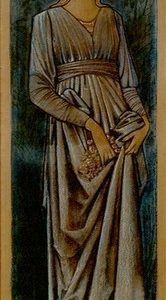In the Catholic calendar the middle of August is graced by the liturgical commemoration of Mary’s Assumption into heaven, celebrated on the 15th. In this article we will survey some of the rich customs associated with the Feast of the Assumption throughout Catholic world.
Throughout the Middle Ages, the thirty days from Mary’s Assumption to September 15th were known as “Our Lady’s Thirty Days,” or in German speaking countries, Frauendreissiger. In central Europe, the Feast of the Assumption was popularly known as “Our Lady’s Herb Day”—Kräutertag in German and Matka Boska Zielna in Polish.
Besides having a general seasonal character of rejoicing for a successful harvest (the thirty days generally terminated at or near the autumn Ember Days), popular piety ascribed a character of goodness and blessing to the period. Harmful animals were believed to become docile, and poisonous plants became harmless. Food produced during this period was thought to be especially wholesome and capable of retaining its freshness much longer.
These beliefs were so prevalent that the Roman Ritual contains several blessings for the occasion. The blessings appear to pertain to fruits and herbs whose value was medicinal, as they petition God “to pour forth upon their natural power already given by Thee the grace of Thy new blessing; that when used by men and beasts who apply them in Thy name, they may provide protection against all disease and adversity.”
Another prayer of the Roman Ritual asks for the blessing of the Mother of God upon herbs specifically associated with childbirth. Given Mary’s role as mother of Christians, it is particularly fitting for the day of her Assumption into glory, which of course inaugurates the beginning of her universal mediatorship in heaven. The prayer says:
Let us pray. O God, who on this day didst raise up to the heights of heaven the rod of Jesse, the mother of Thy Son our Lord Jesus Christ, that through her prayers and patronage Thou mightest communicate to our mortality the Fruit of her womb, Thy Son: we humbly pray that by the power of Thy Son and the glorious patronage of His Mother, we may be so affected by the aid of these fruits of the land as to proceed from temporal to eternal welfare. Through the same Jesus Christ.1
There has long existed a custom of blessing the seas on this day in fishing communities. The twenty-first chapter of St. John’s Gospel is read (when Jesus went fishing after the Resurrection), along with sections of Luke 5 (“Henceforth you shall be fishers of men”). The Magnificat is prayed, the sea sprinkled with Holy Water and the sign of the cross is made over it. It is believed that swimming in waters blessed on this day is curative.
In Italy, the Feast of the Assumption is known as Ferragosto. The origin of Ferragosto is pre-Christian, dating back to a holiday established by the Emperor Augustus Caesar in 18 BC. Originally on August 1st, Ferragosto was a day of rest for agricultural workers. It was custom for them to wish their employer “buon ferragosto” and receive a monetary bonus in return. Sometime in the Middle Ages, the Italian churches shifted the holiday from the 1st to the 15th to correspond with the Assumption. During the Renaissance, the payment of the Ferragosto bonus became law throughout the Papal States. The custom of Ferragosto continues to this day, used by modern Italians for relaxation and travel.
Many regions hold processions or festivals on the Assumption. Of great renown are the celebrations of the isle of Malta, whose patron saint is the Virgin Assumed into Heaven. There, the 15th is a public holiday, observed with great pomp and ceremony by churches and municipalities.
The Assumption customs of Greece and the Aegean are too rich and varied to account for here, as every island and town may have its own unique traditions going back centuries.2 Two notable examples of Greek Assumption customs are provided by the northern city of Kozani and the island of Paros. In Kozani, Mary is venerated under the title Virgin of Mikrokastro, from the Mikrokastro monastery. Every year on the eve of the Assumption, groups of local “pilgrim horsemen” converge in town squares to invite people to festivals in honor of the Virgin. The following day, the horsemen convene at dawn before the image of the Blessed Mother in Mikrokastro Monastery and process on horseback to Kozani, approximately twenty miles away. The horses are lavishly decorated and provide an impressive spectacle for those travelers who catch sight of them on the road. When the horsemen arrive in Kozani after noon, there is festive merrymaking until evening.
On the Cycladic island of Paros in the city of Parikia, there is a church called Panagia Ekanontapyliani (literally, “The Church of 100 Doors”). This is one of the oldest churches in Christendom, dating from the year 326. On the morning of the Assumption, the faithful congregate here before an image of the Virgin within the church, followed by a procession. But the real sight comes with dusk, when scores of boats bearing lighted torches approach the pier at Parikia. The brightly costumed crews of these boats are known as “pirates,” who upon disembarking, start the evening festival with the traditional Balo dance.
The feast day also has civic or political significance in many places. One example is Canada, where in 1881 the Acadians of New Brunswick established August 15th as National Acadian Day. This day was meant to be a celebration of Acadian culture and Catholic heritage in Canada. Instrumental in the establishment of this holiday on the 15th was the influential priest, Abbé Marcel-François Richard, who in a speech at the National Convention of Acadians of 1881, argued that devotion to the Blessed Virgin Mary was “the national devotion of all Acadians.”3
It would be impossible to give a comprehensive list of everywhere Mary’s Assumption is venerated, but the fact that it is a public holiday in 43 different countries should give some idea of the great regard people the world over hold for this most august mystery.
Carracci, A. (c. 1590). Assumption of the Virgin [painting]. Retrieved from Wikimedia Commons.
1The two prayers cited above can be found on the excellent website Fisheaters, available online at www.fisheaters.com/customstimeafter pentecost6.html.
2For more on Greek Assumption customs, see the article “Customs and Traditions of Assumptions (August 15) Across Greece” by Anastasia Chaini in The Greek Reporter, Aug. 14th, 2011. Available online.
3“When is National Acadia Day Celebrated?” on the website of the Acadian Museum of Prince Edward Island. <accessed 29 November 2020>










